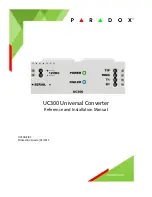
IM 12B6B3-E-H
Calibration 6-1
6. CALIBRATION
The EXA PH402 can be calibrated in three distinct ways.
6-1. Automatic calibration
This method uses internally programmed buffer tables, from Service Codes 24, 25 and 26, to calculate the
buffer value at the actual temperature during the calibration. In addition, the stability of the reading is auto-
matically calculated, and when the reading has stabilized fully automatic adjustments of slope and asymme-
try are made. This eliminates the question of how long the operator should allow prior to adjustment. A
menu driven prompt system conducts the operator through the simple, foolproof routine.
Default settings for the buffer solutions are the standard NIST (formerly NBS) recognised solutions “4”, “7”
and “9”. These are known as primary buffers. They have a much better buffer capacity than the “commer-
cial” or adjusted buffers. Yokogawa strongly recommends the use of these buffers to provide the best pH
calibration.
6-2. Manual calibration
In this method, the operator decides on the actual value to enter. Manual calibration is most often used for
single-point adjustment of the asymmetry potential, by comparison method.
Manual calibration can also be used to perform a full 2-point calibration with solutions other than the NIST
buffers that are listed in the calibration tables. In this case, the solutions are applied sequentially as in the
AUT CAL method, but the user determines the adjustment of reading and stability.
NOTE:
During manual calibration the temperature coefficient is still active. This means that the readings are referred
to 25 °C. This makes grab sample calibration easy and accurate. However, if the manual calibration tech-
nique is used for buffer calibration, the temperature coefficient must be set to zero in maintenance mode in
the “TEMP”routine (see chapter 5).
6-3. Sample calibration
The operator activates the “SAMPLE” calibration routine, at the same time as taking a representative
process sample. After determining the pH of this sample by independent methods, (in the lab for example)
the reading can be adjusted. While the sample is being analyzed, EXA holds the sample data in memory,
while continuing to control and read pH normally.
6-4. Data entry
In special circumstances, users can directly enter the calibration data in the service code menu (see chapter
5). This is appropriate where the manufacturer provides calibration data for each probe (as with the Pfaudler
sensors) or where electrodes are laboratory calibrated for subsequent installation on the plant.
Service Code 23 allows the values of ITP, asymmetry potential (or zero point) and slope to be entered.
Содержание PH402G
Страница 1: ...Instruction Manual Model PH402G pH Converter IM 12B6B3 E H 7th Edition YOKOGAWA...
Страница 2: ......
Страница 6: ...IM 12B6B3 E H...
Страница 26: ...IM 12B6B3 E H...
Страница 49: ...Parameter setting 5 17 IM 12B6B3 E H 5 3 Notes for guidance in the use of service coded settings...
Страница 68: ...IM 12B6B3 E H...
Страница 76: ...IM 12B6B3 E H...
Страница 82: ...IM 12B6B3 E H...
Страница 93: ...IM 12B6B3 E H...
















































